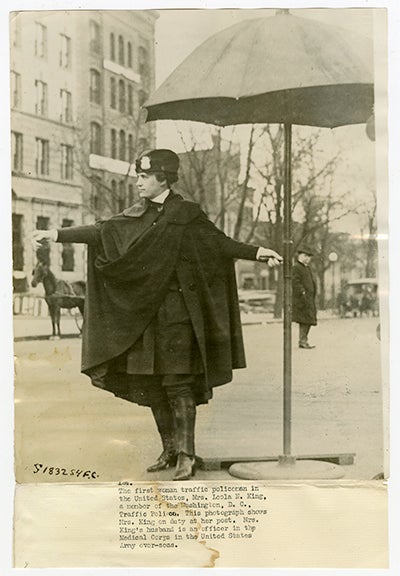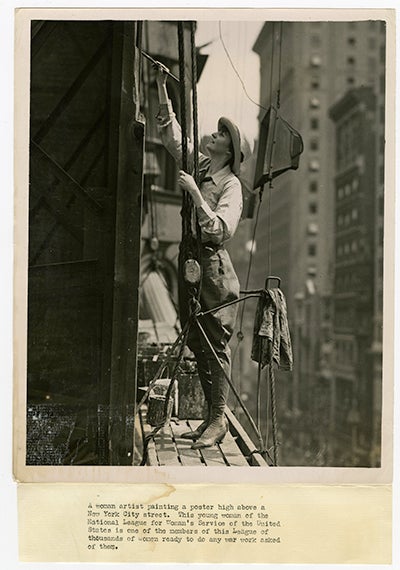Images of Women and a Visual Literacy Exercise
Here are two of my favorite images of women from the women’s collections at the Booth Family Center for Special Collections.
In gathering these images, I’m reminded of how important it is to recognize the value of visual artifacts such as photographs and graphic images. Visual literacy is the foundation of learning — children learn from pictures before they can read text. Images can provide a more immediate connection because they tend to elicit a more emotional response than reading a textual item. Many people already mentally transcribe textual reading into images in order to facilitate their understanding of information conveyed in words. Examining visual artifacts may reveal aspects not apparent from just reading text, making the development of perceptive and observational skills a valuable part of research. In life, visual literacy—the ability to communicate through images and to make sense of them—helps us to better read an increasingly multimedia world, especially when combined with other sensory literacies, including textual and digital literacies.
Try a visual literacy exercise by applying some of the following questions to the photographs shown here. I have provided the barest information about each. See if you can figure out something about the “who, what, where, and why”. Remember: all images are from collections at the Booth Family Center for Special Collections. Check out the online finding aids for these collections in order to find out more about each woman.

Leola N. King, the first traffic policewoman in the United States,
on duty in Washington, D.C.
(Cornelius van Engert papers, GTMGamms169, Box 10, Folder 32)
Step 1. Pick an image.
- Look at it for a few minutes. Avoid reading any caption or accompanying text.
- Capture your first impression in a few words about what the image shows.
- Note everything you see in the image.
Step 2. Determine the purpose of the image.
- Read any existing information that accompanies the image.
- Who made the picture?
- Who was the audience?
- When was image created?
- Why was the image created?
Step 3. Interpret and Communicate
- Verify and support your interpretation of the original using reference sources (including the originating collection).
- Share the picture with a colleague.
- Compare perceptions. See anything new?
- Do you agree with each other’s interpretation?
- If you were provided with only a written description of the image, what would you miss?

A National League of Women’s Service poster painter
in New York City.
(Cornelius van Engert papers, GTMGamms169, Box10, Folder 32)
(Questions adapted from Visual Literacy Exercise by Helena Zinkham, Prints and Photographs Division, Library of Congress, June 2004).
--Lisette Matano, Manuscripts Archivist
November 20, 2018
